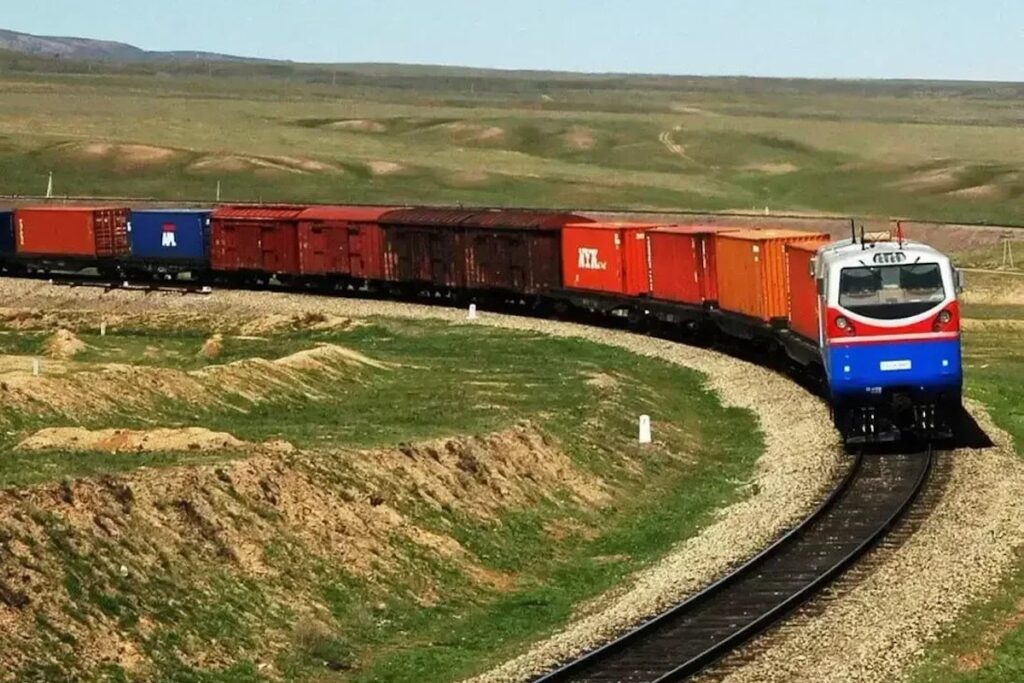As Central Asia reshapes Eurasian trade routes, with China and Turkey consolidating influence, Europe faces a strategic test: adapt quickly to stay relevant or risk being sidelined in one of the 21st century’s most consequential connectivity shifts.
Since Russia’s invasion of Ukraine, Central Asia has emerged as a critical hub in a reshaped Eurasian trade network. Countries from Kazakhstan to Azerbaijan are diversifying transit routes to reduce dependence on Russia, giving new prominence to the Trans-Caspian International Transport Route (TITR) – better known as the Middle Corridor.
This corridor links China to Europe via Central Asia and the South Caucasus, bypassing traditional northern routes through Russia.
Eurasia’s trade map is shifting
In late 2024, shipments of advanced automotive electronics and components increasingly departed from inland Chinese hubs such as Chongqing and Zhengzhou.
Rather than taking the traditional northern route across Russia, goods traveled south through Kazakhstan and Turkmenistan, crossed the Caspian Sea via Azerbaijan, and continued overland through Georgia to Europe.
While slower, these routes reflect a strategic calculation: companies are avoiding corridors compromised by war or political risk. These shifts are no longer isolated – they signal a structural reorganization of Eurasian trade flows, with long-term implications for global supply chains and regional influence.
China and Turkey gain influence
China has emerged as the primary beneficiary. By investing in infrastructure and securing bilateral agreements with Central Asian governments, Beijing is ensuring its exports continue to flow westward despite geopolitical turbulence.
Turkey, leveraging its geographic position as the western anchor of the Middle Corridor, has strengthened its role as a transit hub and consolidated political and economic influence in the South Caucasus.
The corridor itself is a complex network of railways, shipping lines and trucking routes. Kazakhstan has expanded its steppe rail networks to connect Chinese industrial hubs to Caspian ports.
Azerbaijan, with modern facilities in Baku and upgraded rail links across the South Caucasus, has emerged as a critical gateway. Turkmenistan, rich in energy resources, is positioning itself as both a transit country and a supplier of energy to power regional growth.
Together, these investments are creating a multimodal route that is resilient and increasingly attractive for global trade.
Russia’s waning role
Russia’s influence, though still significant through pipelines, rail networks, and security ties, is being steadily challenged. Even long-standing partners are hedging, seeking alternative corridors that dilute Moscow’s grip.
The Middle Corridor is gradually eroding Russia’s dominance as Eurasia’s main transit power. Central Asian states are redrawing their economic maps, and Moscow is no longer at the center.
Yet Russia’s decline in the transit sphere does not mean it has lost all leverage. Its control over energy exports, military ties, and political influence continues to shape regional decisions.
Moscow can still complicate logistics through regulatory barriers, customs delays or security interventions, and it retains the ability to use economic incentives to lure partners back.
The question now is whether Russia can adapt to this more competitive environment – or whether it will be increasingly bypassed as Central Asian states pursue diversification and new partnerships with China, Turkey and Europe.
Europe at a crossroads
For Europe, the rise of the Middle Corridor presents both risk and opportunity. The EU has recognized the corridor’s potential, pledging billions through its Global Gateway initiative to support infrastructure, energy and digital projects.
Yet progress has been slow. If Europe hesitates, Central Asian governments—pragmatic and eager for investment – will turn to faster-moving actors such as China, Turkey or Gulf states.
Europe’s engagement cannot be limited to funding. The EU must treat Central Asia as a strategic region, not a periphery. Investments in ports, railways and customs modernization safeguard European supply chains while supporting regional development.
Brussels should also promote regulatory harmonization, helping Central Asian countries align with international trade standards and reduce bureaucratic bottlenecks. Political engagement is equally crucial. Infrastructure is not just steel and concrete but also trust, diplomacy and long-term partnerships.
Europe must cultivate relationships with key Central Asian governments to ensure its investments translate into influence and strategic leverage.
The stakes for Eurasia
The stakes are high. Central Asia is no longer a passive transit zone but a strategic arena where influence is actively contested.
China and Turkey are consolidating positions, Russia is losing ground and Europe’s actions – or inaction – will shape the region’s connectivity landscape for decades. Failure to engage decisively risks relegating Europe to the sidelines, losing influence over one of the 21st century’s most important trade realignments.
Acting now, however, can secure supply chains, diversify energy access and project stability across a region increasingly looking for partners beyond Moscow. Europe’s choice is clear: adapt to the new realities of Eurasian trade or risk ceding influence to more agile regional actors.
The Middle Corridor is not just a logistics route; it is a geopolitical test of Europe’s ability to navigate the evolving architecture of Eurasian connectivity.
Elkhan Nuriyev is a senior fellow with the Alexander von Humboldt Foundation. He is a global energy associate at the Brussels Energy Club and a senior expert on Russia, Eastern Europe and Central Asia at LM Political Risk and Strategy Advisory in Vienna.

